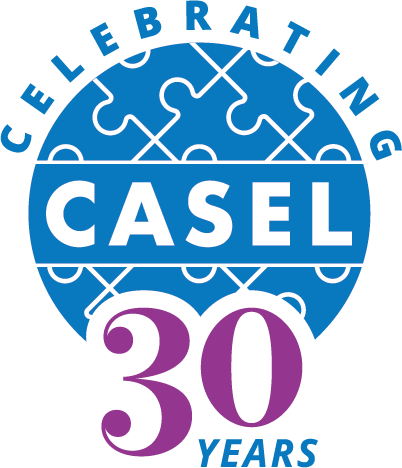The moment they’re born, children look to the caregivers around them to learn how to navigate the world. From responding when getting picked on at the playground to describing how they’re feeling to others, children learn to react in situations based on the guidance they are offered and what they witness from the adults in their lives. Recently, there has been confusion about Social and Emotional Learning (SEL) and misguided claims that they compete with the values and skills that families teach children at home. Truthfully, however, they are more alike than different. As a parent and as someone who has been working over the past year in a Caregiver Engagement and Empowerment Advisory Council with the Collaborative on Academic and Social Emotional Learning (CASEL), I have worked to seek ways for parents and teachers to authentically partner as SEL champions. From my experience, I know that when caregivers and parents work in tandem with teachers, we can carry the positive impact that we, as parents, have on our children at home to other aspects of their life.
Growing up, I was nourished and motivated by my mother’s and grandmother’s trust in me. They spent time and energy so that I could grow up to pursue my interests, develop strengths and now go out into the world empowering and advocating for other parents and youth. I often think about how I have attempted to instill these same lessons into my children. Navigating questions like how can I make them feel comfortable in their skin, supported emotionally, and also have the drive to achieve their goals and purposes? What has resonated with me most are the social and emotional skills of self-awareness, self-management, social awareness, relationship skills, and responsible decision-making that were passed on to me as a child.
As parents, we are experts in our children’s development, interests, culture, and strengths. We are also their advocates as they enter the world and begin school. But while kids learn initial social and emotional skills at home, the learning doesn’t stop when they leave the house. That’s why it’s integral that these skills and attitudes are championed in all the places our children learn, at home, in the classroom, or on the playground. Even though I was raising my son to address his problems respectfully, there were times when I needed to have a conversation with the school. When speaking with my son’s teacher during a parent-teacher conference, it became clear that we both wanted the same thing for my son and the other children; for them to demonstrate the same core principles of treating others with care and respect, being empathetic and standing up when they see injustice occurring. This common ground unites us together, and when we work together towards this common goal, our children will feel supported to dream big.
Families and caregivers should be critical partners in shaping SEL implementation in schools. When caregivers and educators collaborate, we create a positive impact on a child’s life by reinforcing their children’s social and emotional skills. The whole process of learning is a rotation of parents teaching and educators affirming, then schools teaching and parents reinforcing and refining those lessons. Our children carry what we create with them into schools and likewise they bring new ideas and perspectives home. A good way to start is to meet with your child’s teacher or principal to see what SEL concepts are already incorporated in your school’s programming. A resource like the family partnership rubric on CASEL’s website can help see where there are open doors to communicate or work towards getting better. Like, when I met with my son’s math teacher to address not only his calculation skills but also his identity as a math learner and his ability to set realistic learning goals. From that we were able to agree that supporting his sense of success and his awareness of growth within the learning community was the best way for him to persevere even if the content was challenging. Once I knew what the school was already doing, I had an easier time finding ways to collaborate.
To avoid the confusion that anti-SEL bills are stirring up around social and emotional learning, and the false choice they set up between SEL skills at home vs. at school, schedule time to meet with your child’s teacher or principal to discuss how you both can better partner to make sure your child has all the support they need to thrive. If you want to know what is really going on at your child’s school, you have to ask directly. To hear from more parents and their experiences with social and emotional learning, visit the Leading With SEL website.
Karen Lynn Morton is a parent, author, and member of the Caregiver Engagement and Empowerment Advisory Council.
The views in this blog are those of the authors and do not necessarily reflect the views of CASEL.

